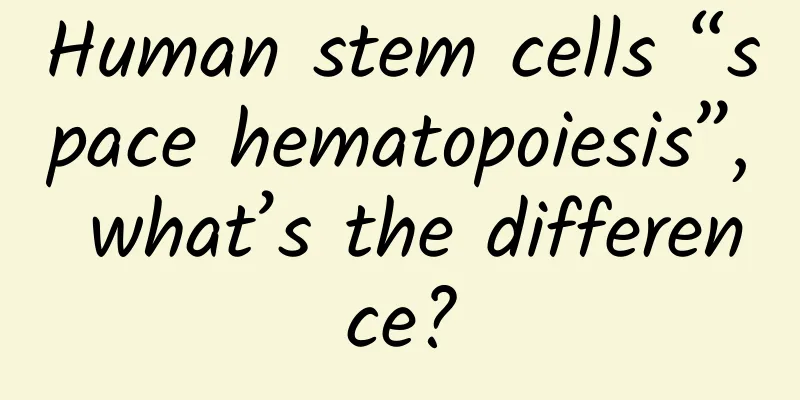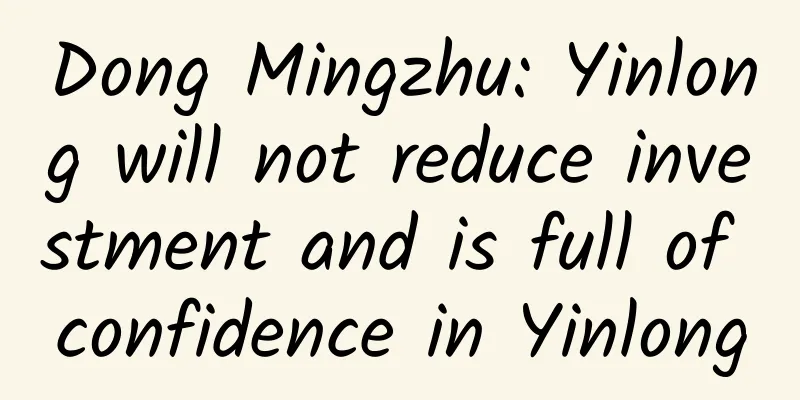Human stem cells “space hematopoiesis”, what’s the difference?

|
On June 4, the return capsule of the Shenzhou 15 manned spacecraft returned to Earth. Along with the astronauts, some experimental samples were returned, including the first international study of pluripotent stem cells (iPS cells) differentiating into early hematopoiesis in the microgravity environment of space. These iPS cells were cultured in orbit for 6 to 15 days, achieving the first "space hematopoiesis" of human stem cells. Professor Liu Qiang, deputy director of Tianjin Institute of Immunology and professor of neurology at Tianjin Medical University General Hospital, said that stem cells have great development prospects and clinical application value in the fields of disease treatment and tissue repair. However, the current breakthrough research on stem cells still faces great challenges, including how to expand the scale of stem cell mass production, how to maintain the differentiation of stem cells, and how to make stem cell differentiation targeted. This experiment of stem cells in space is also a bold exploration of human stem cell research. Why hematopoietic stem cells are the "chosen ones" The full name of ips cells is "artificial pluripotent stem cells", which are stem cells induced from somatic cells. "ips cells have unlimited proliferation potential through culture and can differentiate into almost all cells in the human body, such as liver, germ cells, and cells that are difficult to regenerate, such as myocardial cells and nerve cells, including hematopoietic stem cells," said Liu Zichuan, a researcher at the School of Pharmacy of Tianjin University. According to Lei Xiaohua, the person in charge of the "space hematopoiesis" project of the space station and a researcher at the Institute of Biomedicine and Technology of the Shenzhen Institute of Advanced Technology of the Chinese Academy of Sciences, through experiments, ips cells have been differentiated in orbit into hematopoietic stem cells similar to pebble-like. "Although only a small hematopoietic stem cell was differentiated, through this process it is possible to explore the mechanism that affects the early differentiation of iPS cells in a microgravity environment, so it is very valuable," said Liu Zichuan. ips can differentiate into various stem cells such as bone marrow mesenchymal stem cells, neural stem cells, liver stem cells, etc. So why were hematopoietic stem cells chosen for this experiment? Liu Zichuan introduced that the biggest obstacle to the application of stem cells is the differentiation efficiency and cell proliferation in vitro. There are two main ways to culture cells in vitro. One is adherent growth. Most stem cells need an attachment point to grow on the matrix. The other is suspended growth. Conventional blood cells such as red blood cells, T cells, granulocytes, etc., all grow in suspension. "Hematopoietic stem cells are a key node. Their upstream can be differentiated from ips cells through adherent growth, and can continue to differentiate downstream to derive various suspended blood cells." Liu Zichuan said, but the current differentiation efficiency of stem cells is very low, and hematopoietic stem cells are difficult to achieve unlimited expansion in vitro. Without breaking through this technical bottleneck, it is impossible to truly produce artificial hematopoiesis. Stem cell space experiments are mainly to escape gravity As early as 2017, the scientific research team's research on the proliferation and differentiation of mouse embryonic stem cells on the Tianzhou-1 cargo spacecraft had shown that stem cells cultured in space showed a growth pattern that was superior to that on the ground, while maintaining a higher level of pluripotency gene expression. Liu Zichuan believes that the biggest feature of the space environment is microgravity, and the main factor is the change in gravity. In a microgravity environment, stem cells and the matrix supporting the culture must be different from those on the ground in terms of gravity characteristics, morphological structure, etc. "Some people have compared the effects of matrix gel before and found that the use of softer matrix gel would lead to better expansion of hematopoietic stem cells. In a microgravity environment, stem cells do not need to rely on gravity to attach to the matrix gel. The hardness and softness factors of the matrix gel are weakened, and the burden of expansion is reduced. At the same time, without being affected by gravity, the efficiency of differentiation of suspended cells downstream may also increase," Liu Zichuan introduced. "Although the experimental results may be more complicated than expected, no one has ever conducted this research before. Whether the microgravity environment has a positive or negative effect on the differentiation and expansion of hematopoietic stem cells, it is an innovation, so the experiment is very meaningful," Liu Zichuan commented. In addition, the "space hematopoiesis" experiment is a better extension of the original research on the mechanism of stem cell differentiation and proliferation, and is a very good research model. "Through this experiment, we can also further study the genomic detection of the hematopoietic process, the role of important cell signaling pathways, including the interaction between cells, and other aspects. It is possible to reveal some of the most basic cell biology problems and provide new ideas for stem cell research." Liu Zichuan gave an example, saying that if it is found that microgravity is helpful for stem cell proliferation, then it can be considered to simulate this environment on the ground; or if it is found that there are some special cell pathways in the microgravity environment that can regulate the differentiation and proliferation of stem cells, then their functions can be artificially increased or decreased, which is helpful for the development of stem cell drugs. Liu Qiang believes that due to the influence of the earth's gravity, stem cells tend to aggregate and clump during the culture process. However, due to the microgravity conditions in space, the in vitro culture of stem cells is closer to the differentiation and proliferation of stem cells in the embryo, and can be evenly suspended and grow freely. In addition, without the influence of gravity, the growth environment of stem cells is also relatively stable, which is conducive to the realization of industrial development. "Moreover, compared with cells grown on Earth, cells grown in the microgravity environment of space have significantly improved functions and stronger immunosuppressive capabilities," said Liu Qiang. Due to time and resource constraints, Lei Xiaohua's team only carried out some experiments in this mission. In the future, they will also carry out 3D growth research on human induced pluripotent stem cells in the microgravity environment of space. Through long-term on-orbit cultivation, comparison and analysis of on-orbit experiments and parallel control experiments on the ground, they will explore the laws of 3D growth of stem cells in the space environment and the mechanism of the effect of microgravity on stem cell growth. |
<<: Let foodies deal with invasive species, this country has done it
Recommend
It’s 2020 now. Which is better, fingerprint recognition or facial recognition?
Eight years ago, mobile fingerprint recognition w...
Understand these "skins": What are the differences between cold skin, rice skin, and rolled noodle skin?
The annual midsummer has arrived on time. In this...
User Operations: 5 Steps to User Growth
I've been reading some books on growth recent...
Dutch scientists propose opening a robot red-light district by 2050
In the setting of "Ghost in the Shell",...
Changsha Yuelu District tea drinking tea high-quality girls live audition to share with you reliable resources
High-quality girls who enjoy drinking tea in Yuel...
HuafangzixMuduojia|Art Community Issue 6
HuafangzixMuduojia|Art Community Sixth Issue Reso...
Practical Guide to Community Building and Operation
The next part of the practical guide to community...
GITC 2014: Infrastructure ushers in a new era of storage
[[120835]] "The trend of the world is that a...
Startup teams, don’t wait until you’re out of money to realize these truths
[[143282]] Preface: There is a saying in the entr...
Why can’t cacti grow in the desert of Xinjiang?
A travel buddy in his 50s told me: There are wild...
Android native UI toolkit Jetpack Compose gets version 1.6 update: page scrolling performance improved by 20%, "stable" mark introduced, etc.
IT Home reported on January 29 that Google recent...
“The first bucket of milk tea in autumn”, will it save life or kill you?
Yesterday was the beginning of autumn, and “the f...
16GB iPhone 6S won't go away! This is the only way to use it
If you buy a 16GB iPhone, this means you’ll soon ...
Why are your new users worthless?
Mastering how to organize activities is one of th...
Never make decisions when you are hungry! Here’s why →
People have to make countless decisions every day...









